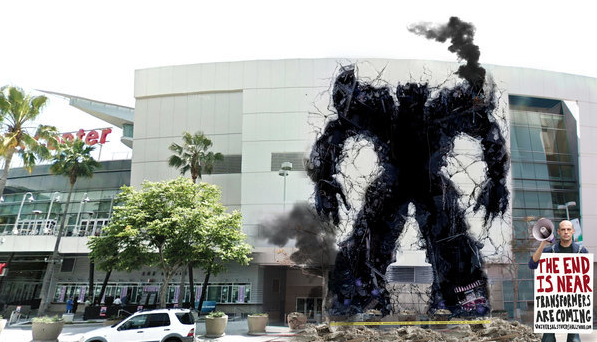 Do you know what a trigger is in marketing? And are you using the right kind of triggers for the type of product or service you’re trying to market?
Do you know what a trigger is in marketing? And are you using the right kind of triggers for the type of product or service you’re trying to market?
In advertising, a trigger is something that can get someone to take action. It can be anything someone can experience with any of his/her five senses—a song, a sight, a smell, etc.—it can even exist as an idea or simply a particular emotion. The point is that when this certain something happens to someone, it makes him/her think of your brand, hopefully resulting in an eventual sale.
Splash Triggers vs. Ripple Triggers: When to Use Them
There are two types of triggers, which depending on your advertising goals, should be used quite differently.
The first is what I like to call a “splash trigger” and it may be what you think of when you think about traditional “big” advertising. It usually takes the form of some remarkable event, PR stunt, or giveaway.
For instance, when one of the Transformers movies came out, the studio’s experiential ad agency created a multi-story mural on the side of a building that made it appear like a giant robot had burst through the wall, forming a perfect robot-shaped cutout. Paired with hired police and giant fabricated footprints in the streets, the stunt generated some serious buzz for the film.

The mural and all the coverage it received on the media was a fantastic trigger for people to go see the movie. In other words, it made a big splash.
This type of trigger is hugely important if you need to create a lot of buzz in a short period of time.
If you’re launching a new product, you’ll want to come up with some kind of splash trigger to get peoples’ attention quickly. That’s why you always see splash triggers used for movies and brand new products (particularly in food and technology); they need to generate sales immediately or the product fails and gets pulled from store shelves.
But don’t worry, you don’t always have to break the bank to do it. Actually, many splash triggers are created with some simple creativity. If you’ve ever watched a viral YouTube video based on hearing someone talk about it, then you know what I’m talking about.
DollarShaveClub.com exploded on the scene when they created a slightly controversial, yet genuinely hilarious video to promote their affordable razors. All it took was some creativity and a few production dollars.
The trick is that a splash trigger must be something remarkable—remarkable enough to get people talking. Which isn’t always as hard as you might think—again, just check out the front page of YouTube.
Splash triggers work when they’re remarkable because people inherently want something to talk about. Not many people enjoy sitting across from someone they know with absolutely nothing to discuss. When you create something conversation-worthy you’re doing people a favor.
So, if you have a product that needs a rapid boost in sales, break out the sketch pad and start brainstorming.
The problem with splash triggers is that they’re not sustainable. They make a big splash and then fade into irrelevance. No one is really talking about that Transformers mural anymore because it’s not relevant to everyday life. I mean, how often does breaking through walls or a giant robot come up in daily conversation?
This is where what I like to call “ripple triggers” come into play.
Ripple triggers are the ones that continue remind you in your daily life, over and over again.
Seriously, who hasn’t thought of Geico’s insanely popular “Hump Day” TV spot on a Wednesday? That’s because every Wednesday is a trigger—a nice recurring one.
The secret sauce here is figuring out how to attach your brand to a recurring trigger in peoples’ lives. And there’s so many examples of this.
Verizon’s “Can You Hear Me Now?” Campaign
Verizon brilliantly attached their brand to a trigger phrase that people across all wireless carriers were saying. They cleverly caused their target audience to think about their product every time problem was experienced with the competitors’ service. And in the wireless business, where reliability is nearly the top purchasing driver, the use of this ripple trigger was a stroke of genius.
Budweiser’s “Wassup?!” Campaign
What’s a better trigger than attaching a beer brand to the experience of guys greeting each other? It’s something all guys do, all the time. And it’s the reason this campaign was incredibly successful for so long.
5 Hour Energy’s “2:30 Feeling” Campaign
We all get it. That after lunch slump. 5 Hour Energy capitalized on it. Now many Americans think about them every time they’re feeling a little sluggish in the afternoon. Again, a trigger that continues to ripple in peoples’ daily lives.
It doesn’t even have to be that creative. Psychologist Gráinne Fitzsimons and author of Catagious, Jonah Berger, conducted a study to compare the effectiveness of two marketing slogans on college students.
They wanted to see which of the following slogans resulted in the students eating more vegetables—a tough challenge in general.
- Live the healthy way, eat five fruits and veggies a day.
- Each and every dining-hall tray needs five fruits and veggies a day.
You can read about the whole experiment in Berger’s awesome book, but can you guess which slogan had better results?
If you guessed #2 you’d be right. That’s because they tied a trigger which was better suited to the goal of eating more vegetables over a long period of time—a perfect task for a recurring ripple trigger.
Mentioning the dining-hall tray is a slick way to hack into the minds of the students every time they grab their lunch. Because trays are very tangible and are used regularly, they were the perfect trigger to tie to the goal of the slogan and the reason the slogan worked.
Interesting side note, when Fitzsimons and Berger tested the two slogans for how appealing they were, #2 tanked. People thought it was corny, unpolished and uncreative. Moral of the story, don’t always think the most most creative campaign will always be the most effective.
The Best Use of Triggers
The most successful advertisers have a knack for combining splash and ripple triggers. This results in a massive groundswell, where a ton of people talk about it at the beginning because it’s something remarkable and then continue to talk about it because it’s attached to a recurring lifestyle trigger.
Crack this code and you’ll be on your way to huge success.
DollarShaveClub.com is also a great example of this, although possibly by coincidence. Not only did they create a remarkable video that caused a nice splash, but their product category, razors, is something used regularly by men AND women. So once you see the video you’re constantly reminding by that ripple trigger that you’re overpaying for shaving products.
Another great example here is Apple’s incredibly famous “1984″ Super Bowl ad.
This was quite a TV spot. Apple and their agency hired Ridley Scott to create something truly remarkable. Something that would cause a splash. And it did. But no one ever talks about recurring triggers when it comes to what’s largely considered the best TV spot ever made. I’m willing to bet that the fact that the spot aired nationally essentially once near the new year gave it some staying power as people adjusted their habit of writing out 1984 as opposed to ’83 at work and in school. A beautiful example of a splash trigger combined with a long lasting ripple trigger.
Tips for Creating Your Next Campaign or Promotion
Make it remarkable. Make it something people will be excited to talk about because it make them appear informed, funny, or interesting in front if their peers. Tie it to some kind of recurring life activity so people will be reminded of your brand every time their encounter the trigger.
Find the Sweet Spot
You don’t want your ripple trigger to be too common. If the ripple trigger is something that happens all the time, it won’t “click” in peoples’ brains. For instance, Coke, as hard as they may try, will never be able to own the trigger of the color red. The color is just too common.
Ask someone to say the first thing that comes to mind when you say “red” and you’ll see for yourself. On the other hand, ask them to say the first thing that comes to mind when you say “peanut butter.” Get it?
What do you think?
Can you think of any other good examples of splash or ripple triggers in marketing? Leave it in the comments.

















